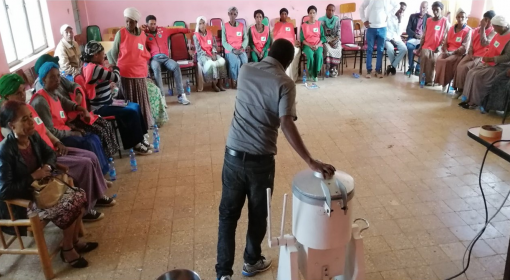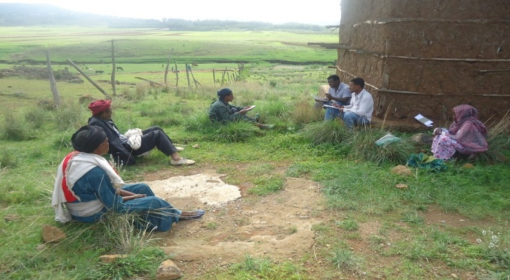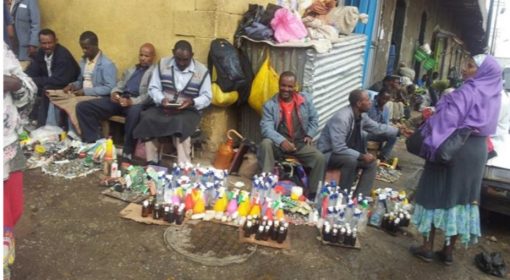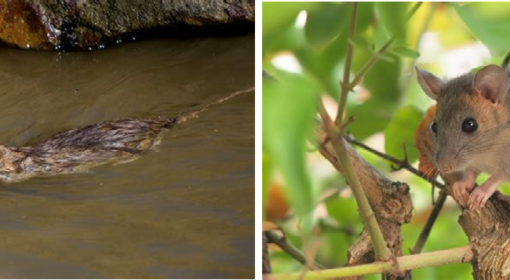By Tadesse Tilahun, Getachew Engdayehu, Bantamlak Wondmnow, and Luwieke Bosma
This is the second in a series of blog posts describing the development and implementation of ecological-based rodent management (EBRM) in Ethiopia. It describes the realization of the joint approach between farming communities, MetaMeta, and the Amhara Bureau of Agriculture in implementing EBRM, with the support of RVO-SBIR and the Green Future Farming project supported by the Ikea Foundation.
In the previous blog in this series, we read about how farmers’ indigenous knowledge, together with scientific research, led to the development of the collective EBRM approach. In this blog, we will dive deeper into how the biological rodenticide was developed and tested as part of the EBRM approach.
The first bio-rodenticide field trial started in the highlands of Mogshe village, close to Gasay in Guna-Begemidir Woreda in the Amhara region. This experiment was conducted at wheat and barley crop fields, covering a four-hectare watershed that struggled with high rodent infestation and crop loss. This first field experiment aimed to assess botanical products of compositions and preparations.
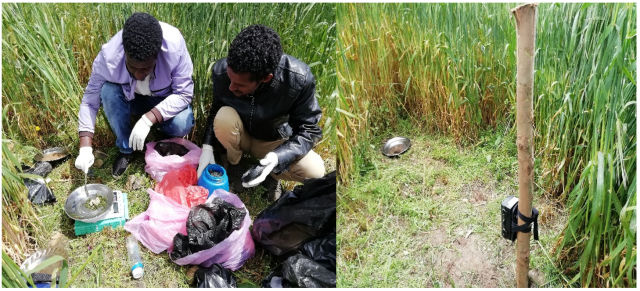
To diversify the knowledge, the trial was replicated the years after on other fields in different localities and other land uses, such as grazing land (Photo 2). This allowed us to verify the results, ensure the efficiency of the various plant sources of ingredients in diverse landscapes, and find the best plant compositions. During the experiments, rodent behavior was monitored with 30 motion-triggered night cameras. In parallel to field testing, lab trials were conducted to test the botanicals in single and mixed forms. Lab trials were done to establish effectiveness, palatability, lethal dose, and non-target harm. The first result showed higher effectiveness of a mixture of two botanicals as rodenticide treatment, clearly indicating a synergistic effect. From here, we continued to test a range of concentrations for selected mixtures to determine the optimal concentration. Afterward, palatability tests confirmed the attractiveness of rats with their preferred bait. With the four selected blends that scored highest on effectiveness and palatability, trials took place with chickens and guinea pigs to determine non-target harm, which proved highly successful, thus confirming that non-target species would not sicken or die if they would take in the bio-rodenticide. The final lab experiment was to determine the lethal dose, which is the dose that is lethal to 50% of the population of rats receiving the treatment. The bio-rodenticide consisting of 2 botanicals that required the lowest concentration to reach LD50 dose was singled out as the winning prototype.
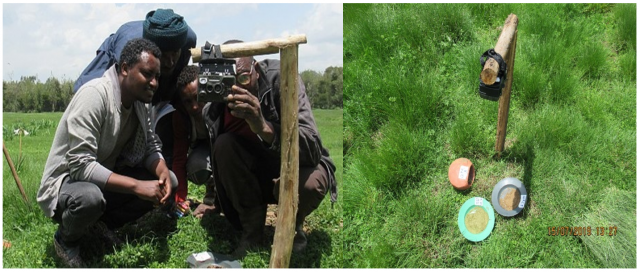
The parallel trials and fieldwork were essential to widen the experience and prove the product’s efficacy. Moreover, conducting these repeated field trials also helped us select the best botanicals that are environmentally sound and feasible, can be accessed locally, are easy to prepare and apply, and are overall preferred by the farmers. After the field and lab experiments and considering all these factors, a bio-rodenticide product was developed from different plant mixtures.
To monitor the changes after bio-rodenticide application, a study with 30 farmers was conducted in two watersheds in the Guna Begemidir Woreda. Fifteen farmers at each watershed tested the product. They applied the bio-rodenticide on their field, testing impact, ease of application, and user-friendliness. In comparison, ten neighbor farmers that did not use the product were part of the research as a control sample. Results showed that the new prototype bio-rodenticide minimized rodent losses to 9%. These promising results, combined with positive farmer feedback, sparked the interest of the neighboring farmers as well. This highlights the importance of embedding this product in the collective EBRM approach. Scaling the joint EBRM approach is discussed in this series’ next and final blog.
Do you want to know more? Contact Luwieke (lbosma@metameta.nl) or have a look at www.rodentgreen.com

